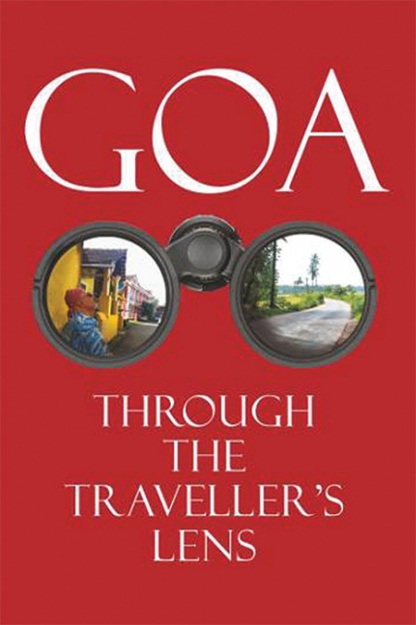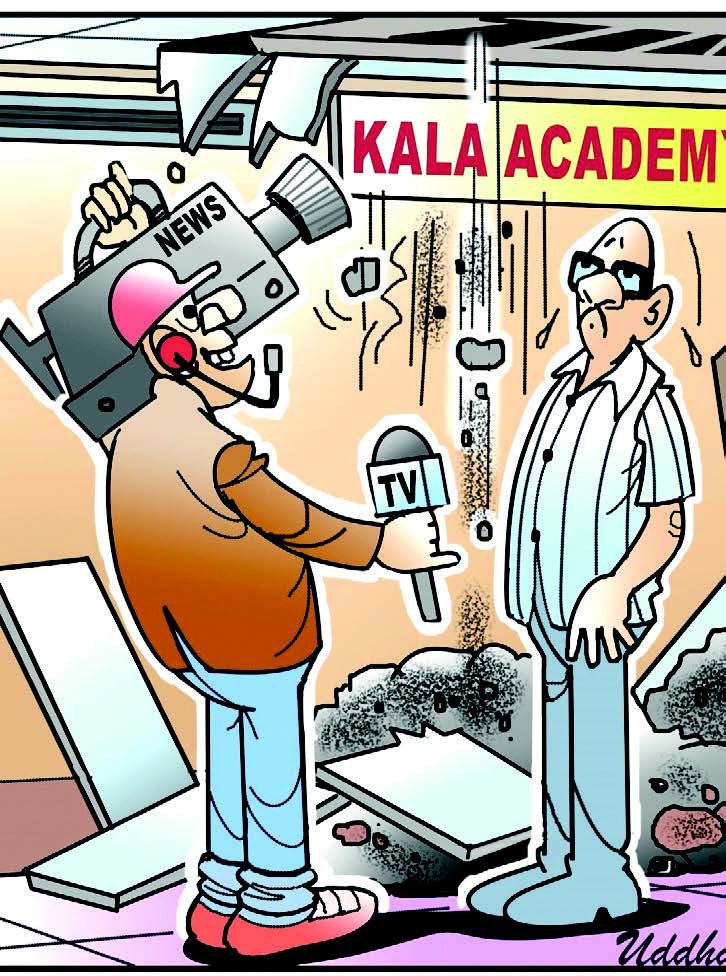25 Mar 2018 | 04:07am IST
Goa, as the travellers saw her across centuries
Much of Goa's identity comes from the perception of the people that have visited this beautiful land. The book, 'Goa Through the Traveller's Lens', comprises papers of fourteen researchers who have studied travel narratives dealing with Goa from the 16th and 17th centuries to the present times. Café takes a look at their observations
Goa has been closely connected with the outside world for
centuries now, but how do travellers to
this place view Goa? To answer this question, researchers from the region
looked at travel narratives dealing with Goa over the centuries.
In brief, this is their answer: Quite a
few see Goa through stereotypes and archetypes. But there have also been
accounts going back literally hundreds of years, which give an insight into lives
lived here in remote times.
Some 14 researchers had their papers
published as a book, titled 'Goa Through the Traveller's Lens'. It is edited by
Dr Nina Caldeira, Professor and Head of Department of English, Goa University.
“There are 14 writers, some seniors and
some very young minds. All of their contributions were equally important in
bringing out this book,” says Dr Nina.
“Many of the contributors came from
academia, but the points they make, I think, is relevant to the wider debate on
how Goa is seen by the outside world, says Frederick Noronha, publisher.
The 254-page book is based on papers
presented at a seminar held in 2017, and was released recently at a seminar
held by the Department of English, Goa University. Moreover, travel literature
is part of the newly drafted 'Choice Based Credit System Undergraduate
Syllabus'.
On the title of the book, Nina concurs
with the fact that Goans are curious to know the many versions of Goa from the
traveller's lens. “How do others see us? How does 'the other' define the ‘I’?
Its all about engaging with the identity discourse. At times, the objective
'other' sees what we cannot. At other times, they grossly misunderstand and
misinterpret what they see. The book records the multiple voices of the
travellers: some curious, some critical, and some others who came, who loved
and stayed,” says Dr Nina.
She further points out that in the in the
wake of cultural studies, the contemporary world has seen a renewed interest in
travel writing. “For a region like Goa,travel writing carries with it a lot of
implications. Not only does it interpret this tiny region to the outside word,
but it even influences Goa's perception of themselves. This book focuses on how
travel writing depicts the small, historic and this often hard to understand
region for travellers,” adds Frederick.
These pages look at how scholars travelled
to meet kindred spirits. Or how an American anthropologist then based in
Australia understood villages in Salcete. Other contributions look closely at
travel blogs focusing on Goa, a French journalist’s radio travelogues, travel
narratives, Naipaul's Goa, the depiction of this region in the works of writers
of distant centuries such as Francois Pyrard de Laval, Tome' Pires and Dennis L
Cottineau de Kloguen, reflections in Manohar Shetty's 'Goa Travels' and the Goa
Writer's 'Inside/Out'. One essay looks at Goa's depiction in some works of
fiction.
“For a change, scholars from the area turn
the magnifying glass onto those who have long presented Goa to the world,”
quips Frederick.
Drawing from various disciplines, the
contributors to the book apply themselves to a number of key questions
pertaining to travel writing, ranging from travel writing as a historian's
conventional documentary cache, to the interrogation and critiquing of the play
of orientalism and postcoloniality, to the forces of globalisation and all that
the travellers collect in their travel box.
Dr Isabel Santa Rita Vas looks at how Goa
was a meeting point for ideas and writers, studying Portuguese researcher
Anabela Mendes, and Spanish scholar Jose Paz. Both came to Goa en route their
intellectual journey. While Anabela Mendes is in search of the travel writings
of Garcia de Orta, the well known physician and botanist of the sixteenth
century, José Paz's love for the Portuguese language and the writings of the
Indian polymath Rabindranath Tagore brings him to Goa.
Dr Sushila Sawant Mendes looks at the research of Jewish
anthropologist Robert S Newman, and how he understood the AVC
(Assolna-Velim-Cuncolim) villages of Salcete in the 1980s. The arguments in her
paper are a dialogue between an insider and an outsider, unfolding the cultural
patterns and spaces about the people and history of these Goan villages.
Historian Xavier M Martins writes on 17th century maritime Goa,
as viewed by François Pyrard de Laval. He talks of how the French navigator and
traveller gives a vivid description of the seventeenth-century city of Goa.
While librarian-historian Maria de Lourdes Bravo da Costa
attempts to understand the food history of Goa from the writings of François
Pyrard de Laval and Denis Cottineau de Kloguen. She analyses and assesses the
two French travellers' reflections on food habits in Goa, which they visited at
different points in time. In her analysis, Costa asks pertinent questions such
as: What did they observe in the food habits in Goa? Was there a change between
the two visits? And how relevant is it to understand food history of Goa?
Dr Prema Rocha (St Xavier's College) shifts the focus on Goa from
the tourist idea of fish, feni and fun to the accounts of travellers who came
to stay and made Goa their home, in her in-depth analysis of Manohar Shetty's
‘Goa Travels’ and the chronicles from ‘Inside/Out’ from the GoaWriters.
Interestingly, Rocha titles her article ‘Veni, Vidi, Amavi’ (I came, I saw, I
loved) instead of the colonialist dictum Veni, Vidi, Vici (I came, I saw, I
conquered).
Sunita Mesquita sees Goa through the mirror of Sir Richard F
Burton, Maurice Collins, Luis Santa Rita Vas and others. She searches for
stability and sustenance of Goan culture through travel narratives and the need
to correlate literature with culture as the vital fulcrum of its sustenance.
She assesses how travel narratives have become veritable indicators of culture.
Dr Glenis Mendonca looks at the Goa depicted through recent
travel blogs (expatblog.com, global-gallivanting.com, Goa Travel Blog, Hippie
in Heels, among others), offering a traveller's insight into unvoiced
‘Goa-experiences' and adding a new dimension to the Goa-travel literary output
as well as building awareness among the average Goan who is unaware of the
interesting things in his own backyard.
Dr Brian Mendonca tells the story of change in Goa through
poetry and documents the rapidly changing Goa, a landscape under erasure,
attempting to theorise Goa through the lens of the traveller-poet.
Irene Silveira and Natasha Maria Gomes, both teachers of French
at the Goa University, undertake a detailed study the depiction of this region
(Goa). Irene focuses on three rewritings of Goa by contemporary Europeans –
‘Les Instantanés du Monde’, ‘Goa is not India’, and ‘Contacto Goa’ – with a
view to examine articles, audio podcasts and film documentaries in the light of
past travel writing and the current reality.
Natasha opines that travelogues are a subjective appraisal of an
objective reality. She explores French journalist Anne Bonneau's radio
travelogues on Goa. Bonneau's travelogues, Gomes asserts, are structured around
the archetype of the musician, artist, local artisans and tribals; but the
image of the Goan stereotype, the fun-loving susegaado Goan, is ever-present.
Gomes points out that some Goans themselves perpetuate this stereotype in order
to feed the tourist industry.
Akshata Bhatt and Nafisa Oliveira, working through the baseline
of select writings from Goa Travels, study and analyse the reconstruction(s) of
Goa through the travellers' lens in view of Goa's increasing tourist influx and
visibility on the global map. They argue that the contemporary image of Goa –
with its sun, sand and susegaado – can also neatly fit into it a fourth `s' –
‘stereotype'. This popular paradigm, they note, fails to do justice to the
inherent variegation and verve which is a part of Goa's larger narrative, its
diverse cultures, dialects, festivities, peoples and a systematic syncretism
that is unique to a land that has endured dynamic dialectics.
Palia Gaonkar argues that there can be two impressions of a
certain place – the tourist's version, and the traveller’s version. Far from
the tourist version, a traveller will make a learning experience out of their
visit. Focussing on the few pages dedicated to Goa in V S Naipaul's ‘India: A
Million Mutinies Now’ (1990), Gaonkar seems to agree with Naipaul's observation
that the “fracture in reality” of Goa is similar to any other Indian land.
Ambika Kamat analyses how Goa became an object of the Occidental
Gaze in ‘The Suma Oriental’ of Tomé Pires, so as to unravel how the Portuguese
colony has been objectified in Pires's account as a land yielding great
revenue.
Frederick
Noronha critiques the image of Goa as a high profile tourist destination. He
addresses the issue of the global understanding of this region, mostly from the
information gathered from media images, while also addressing the local
perception of the place.

